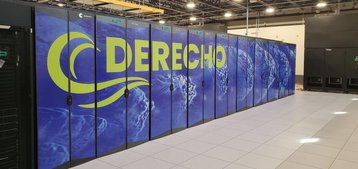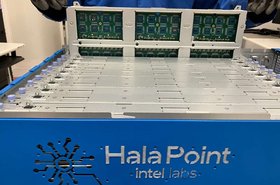The National Center for Atmospheric Research (NCAR) has launched a new supercomputer.
“Today, our supercomputer Derecho was officially unveiled!” the NCAR-Wyoming Supercomputing Center said this week. “Our Derecho ribbon cutting ceremony at the NCAR-Wyoming Supercomputing Center was supported by our community and various leaders from Wyoming state government, University of Wyoming, the National Science Foundation, and Hewlett Packard Enterprises.”
The HPE Cray EX cluster is a 19.87 petaflops system featuring 2,488 compute nodes with 128 AMD Milan cores per node, and 82 nodes with four Nvidia A100 GPUs each.
The Cheyenne, Wyoming, system is to replace the existing 5.3 petaflops system, known as Cheyenne. Derecho will be used to study phenomena ranging from wildfires and hurricanes to solar storms.
First announced in January 2021, the system’s installation & testing was completed in late July 2023 - it was originally set to become operational by early 2022.
A derecho is a widespread, long-lived wind storm associated with a band of rapidly moving showers or thunderstorms.
“We are very pleased that Derecho has passed through the testing phase and is beginning operations,” Thomas Hauser, interim director of NCAR’s Computational and Information Systems Laboratory, said last month. “This new system provides us with a major boost in supercomputing performance and is an invaluable asset as the nation’s scientists work to better understand the Earth system.”
The supercomputing center launched in 2012. The site’s existing Cheyenne system was built by SGI and launched in 2017 (HPE acquired SGI in 2016). An SGI ICE XA Cluster, the system features 145,152 Intel Xeon processor cores in 4,032 dual-socket nodes. The arrival of Cheyenne saw the retirement of the center’s launch systems, the IBM-based Yellowstone system, which offered 1.5 petaflops.







